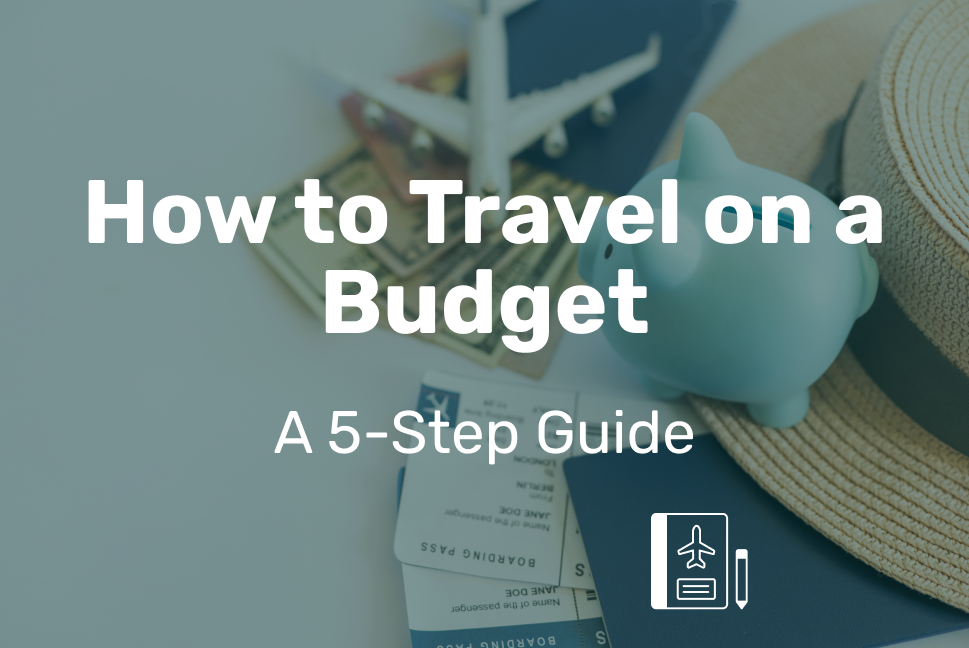Traveling is a beloved activity that many dream about, but the high costs often associated with trips can deter even the most eager adventurers. However, with some planning and savvy strategies, you can explore new destinations without breaking the bank. This guide will walk you through essential steps on how to travel on a budget, ensuring that you make the most of every dollar.
Step 1: Planning and Research
Start Early: One of the golden rules of budget travel is to plan as far in advance as possible. Early planning allows you to take advantage of early bird discounts and better rates on flights and accommodations. Additionally, having a clear plan helps you avoid last-minute expenses that are usually higher.
Choose Your Destination Wisely: Not all destinations cost the same. Opt for places known for being budget-friendly. Countries in Southeast Asia, parts of Eastern Europe, and Central America offer great experiences at a fraction of the cost you would incur in more expensive locations like Western Europe or North America.
Travel Off-Peak: The timing of your trip significantly impacts costs. Traveling during the off-season can lead to substantial savings on flights, accommodations, and activities. Moreover, you’ll benefit from fewer crowds and a more authentic experience of the local culture.
Step 2: Budgeting and Saving
Set a Trip Daily Budget: Once you have an overall budget, break it down by day to manage your expenses more effectively. Include everything from meals and lodging to sightseeing and souvenirs.
Save in Advance: Set money aside in a dedicated savings account for your travel fund and add to it regularly. Even small contributions can grow over time, making your trip more financially comfortable when the time comes.
Use the MoneyWellth Budgeting App: Our budgeting app can help you keep track of your savings and expenditures, ensuring you stay on target with your financial goals.
Step 3: Booking and Accommodation
Book Flights Wisely: Utilize flight comparison tools like Skyscanner or Google Flights to find the best deals. Be flexible with your travel dates and consider flying mid-week when flights are typically cheaper. Booking a flight on Sunday usually gets you the best deal. Avoid booking flights on Fridays, as that’s typically when you see the highest prices. You also usually see the cheapest tickets if you book within 5.5 months and 1.5 months before your departure.
Consider Alternative Accommodations: When it comes to how to travel on a budget a hotel can be a big cost prohibitor. Instead of hotels, look into hostels, guesthouses, camping, or platforms like Airbnb. These can offer more affordable rates, especially if you’re willing to stay in a shared room or a less central location.
Leverage Reward Points and Miles: If you travel frequently, consider using a credit card that offers travel rewards. Accumulated points can often be used to book flights and hotels at a reduced cost or even for free. Just make sure you are paying the card off each month, or the high interest isn’t worth the reward perks!
Step 4: Eating and Exploring on a Budget
Cook Your Meals: Choose accommodations with kitchen facilities and try cooking your own meals. Shopping at local markets and preparing a few meals can save you a lot of money.
Eat Like a Local: If cooking isn’t an option, eat where the locals eat. Such places are usually cheaper and offer more authentic culinary experiences than tourist-oriented restaurants.
Free Activities: Research free activities in your destination. Many cities offer no-cost attractions like museums, parks, and historical sites. Also, consider walking or renting a bike to explore rather than using taxis or other expensive transport options.
Step 5: Stay Flexible and Adapt
Be Ready to Adapt: Sometimes, despite the best planning, things can go awry. A flexible attitude allows you to adapt to changing circumstances without overspending. For instance, if a planned activity becomes too expensive, look for cheaper alternatives.
Use Local Transportation: Public transport is generally cheaper than renting a car or taking taxis. It also provides a more immersive experience as you get to travel like the locals.
Traveling on a budget doesn’t mean you have to skimp on experiences. With the right approach and a bit of creativity, you can enjoy amazing trips that are both affordable and enriching. Start with thorough planning, make smart choices, and stay flexible. Remember, the essence of travel is to explore and experience new cultures, not necessarily to spend extravagantly. By following these steps on how to travel on a budget, you’re well on your way to creating memorable journeys without emptying your wallet. Happy travels!

